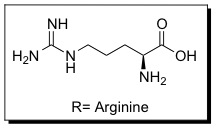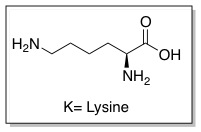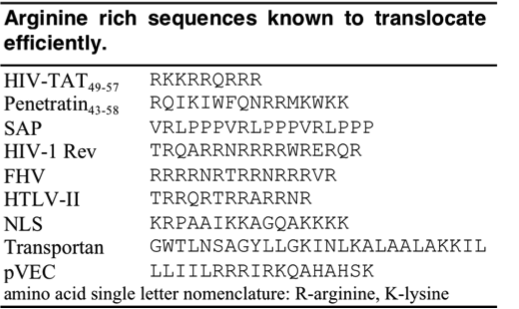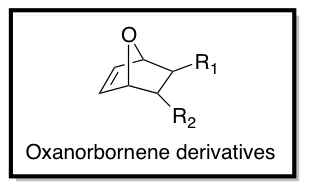Brittany deRonde/Sandbox 1
From Proteopedia
| (68 intermediate revisions not shown.) | |||
| Line 1: | Line 1: | ||
| - | HIV Tat | ||
| - | Please use the "3D" button above this box to insert a Jmol applet (molecule) on this page. | ||
| - | Or use the four-green-boxes-button to insert scrollable text adjacent | ||
| - | to a Jmol applet. Check out the other buttons as well! | ||
| - | --> | ||
| - | [[Image:intactModelLargeText.jpg|frame|Bacterial chemotaxis receptor]] | ||
| - | |||
One of the [[CBI Molecules]] being studied in the [http://www.umass.edu/cbi/ University of Massachusetts Amherst Chemistry-Biology Interface Program] at UMass Amherst and on display at the [http://www.molecularplayground.org/ Molecular Playground]. | One of the [[CBI Molecules]] being studied in the [http://www.umass.edu/cbi/ University of Massachusetts Amherst Chemistry-Biology Interface Program] at UMass Amherst and on display at the [http://www.molecularplayground.org/ Molecular Playground]. | ||
| - | Many bacteria can "smell" their surroundings and "choose" where to go. They detect molecules such as amino acids or sugars using receptors that bind these molecules and transmit a signal into the cell. This signal controls several proteins which ultimately control the direction of rotation of the motors that rotate the flagella. One direction causes the cell to continue swimming; the other direction causes the cell to tumble. When an attractant molecule binds, the receptor signals: "Things look good, keep swimming!" The opposite signal occurs when bacteria sense a repellant or less attractant molecules: "Time to tumble and try a new swimming direction." | ||
| + | == '''Introduction''' == | ||
| + | |||
| + | '''HIV Tat''', or simply Tat, is a human immunodeficiency virus (HIV) gene that regulates transcription of HIV dsRNA.<ref>Sodroski ''et al. Science.'' '''1985'''. 227, 171-173. [http://www.jstor.org/stable/1695050] http://www.jstor.org/stable/1695050</ref> Tat, which stands for trans-activator of transcription, contains 86 amino acid residues in its sequence.<ref>Arya ''et al. Science'' '''1985'''. 229, 69-73.</ref><ref>Sodroski ''et al. Science.'' '''1985'''. 229, 74-77.</ref> <Structure load='1TIV' size='500' frame='true' align='right' caption='HIV Tat. Grey residues = polar groups, Pink residues= hydrophobic residues, and Blue residues= protein transduction domain' scene='Brittany_deRonde/Sandbox_1/Hiv_tat/2' /> It is released by HIV infected cells in order to enhance replication of the virus.<ref>Dayton ''et al. Cell.'' '''1986'''. 44, 941-947.</ref><ref>Fisher ''et al. Nature.'' '''1986'''. 320, 367-371.</ref> Nanomolar concentrations of Tat have been reported in the blood of HIV-1 infected people.<ref>Xiao ''et al. Proc. Natl. Acad. Sci. USA.'' '''2000'''. 97, 11466-11471.</ref> When the protein enters non-infected cells, the transcription efficiency increases. It is estimated that transcription levels are 10 to 100 fold higher during the transcription elongation stage when compared to normal basal transcription.<ref>Ensoli ''et al. Nature.'' '''1990'''. 345, 84-86.</ref> Green and Lowenstein, and Frankel and Pabo independently published studies in 1988 that demonstrated that Tat had the ability to cross cellular membranes and initiate transcription of HIV dsRNA.<ref>Green ''et al. Cell.'' '''1988'''. 55, 1179-1188.</ref><ref>Frankel ''et al. Cell.'' '''1988'''. 55, 1189-1193.</ref> These were the first known reports of a '''cell penetrating peptide (CPP)'''. | ||
| + | |||
| + | == '''Cell Penetrating Peptides''' == | ||
| + | |||
| + | '''Cell penetrating peptides (CPPs)''' are proteins with the ability to cross cellular membranes and facilitate the uptake of various cargo, such as small molecules, siRNA, and small DNA fragments.<ref>Futaki ''et al. J. Biol. Chem.'' '''2001'''. 276, 5836-5840.</ref> Such cargo can be associated via covalent or non-covalent interactions. Tat is considered a CPP because it contains a protein transduction domain (PTD). PTDs are cation-rich sequences of 10-30 residues, usually containing several Lysine and/or Arginine residues.<ref>Wender ''et al. Adv. Drug Deliv. Rev.'' '''2008'''. 60, 452-472.</ref> | ||
| - | + | [[Image:Arginine1.jpg]] [[Image:Lysine1.jpg]] | |
| - | + | These sequences improve interactions between CPPs and cellular membranes and can help them enter cells. The (amino acid <scene name='Brittany_deRonde/Sandbox_1/Hiv_tat/3'>residues 47-57</scene>) of HIV-1 Tat comprise the protein transduction region of this protein. This arginine rich, 11 amino-acid sequence, <scene name='47/475184/Tat_arg/3'>YGRKKRRQRRR</scene> is now referred to as the TAT peptide, and has be shown to have improved cellular uptake compared to Tat. | |
| - | < | + | |
| - | + | ||
| - | === Ligand-binding domain === | ||
| + | Since the discovery of HIV Tat, other Arginine-rich, natural CPPs have been discovered including, penetratin from Drosophila antennapedia protein, sweet arrow peptide (SAP), HIV-1 Rev, flock house virus (FHV) coat, brome mosaic virus (BMV) Gag, human T-cell lymphotrophic virus (HTLV)-II Rex, and the nuclear localization signal (NLS) from nucleoplasmin. <ref>Futaki ''et al. J. Biol. Chem.'' '''2001'''. 276, 5836-5840.</ref><ref>Prochiantz ''et al. Adv. Drug Deliv. Rev.'' '''2008'''. 60, 448-451.</ref> The PTD sequences for these proteins can be found in the table below. | ||
| - | + | [[Image:Arginine_Rich_Peptides.png]] | |
| + | == '''Tat-mediated Transduction''' == | ||
| - | + | The PTD in HIV Tat is highly cationic. When charged residues (Arginine or Lysine) are replaced with neutral residues (Alanine), cellular uptake decreases. It is likely that the cationic charge is necessary for electrostatic interactions with components of the cellular membrane, such as lipid head groups and proteoglycans.<ref>Ziegler ''et al. Biochemistry'' '''2003'''. 42, 9185-9194.</ref><ref>Goncalves ''et al. Biochemistry.'' '''2005'''. 44, 2692-2702.</ref> Other interactions may also play a role in interactions with the cellular membrane, such as hydrophobic and non-covalent interactions.<ref>Ziegler ''et al. Adv. Drug Deliv. Rev.'' '''2008'''. 60, 580-597.</ref> Although cellular uptake is not directly dependent upon architecture (branched vs. linear), it is dependent upon the number of Arginine residues. Polymers with less than five arginine residues are unable to enter cells.<ref>Wender ''et al. Proc. Natl. Acad. Sci.'' '''2000'''. 97, 13003-13008.</ref> As the number of residues increases, cellular uptake improves up until 15 residues where polymers can enter cells but with hindered efficiencies.<ref>Mitchell ''et al. J. Pept. Res.'' '''2000'''. 56, 318-325.</ref><ref>Futaki ''et al. J. Biol. Chem.'' '''2001'''. 276, 5836-5840.</ref> The exact mechanism of cellular uptake is still highly debated in the literature, but a couple of the proposed methods are discussed below. | |
| + | ==Transduction== | ||
| + | Early studies indicated that HIV Tat primarily entered cells through transduction, meaning that the protein directly crossed the cell membranes. However, for most of these studies, cells were fixed with formaldehyde prior to sample analysis. In 2003, it was discovered that by fixing cells prior to analysis, it permeablized the cell membranes and resulted in artificially high cellular uptake values. Fixed cells showed higher concentrations of Tat in nuclei compared to non-fixed cells where it was localized in the cytoplasm. <ref>Richard ''et al. J. Biol. Chem.'' '''2003'''. 278, 585-590.</ref> Studies also showed that FACS could not tell the difference between internalized cells and those proteins that were only bound to the cellular membranes. Cellular uptake studies performed at 4°C and under conditions of ATP depletion show that a small percentage of CPPs can enter cells and also suggests that a majority of the protein enters cells through energy dependent pathways.<ref>Drin ''et al. J. Biol. Chem.'' '''2003'''. 276, 31192-31201.</ref> Some groups have also studied transduction of Tat using model vesicles. <ref>Ziegler ''et al. Biochemistry.'' '''2003'''. 278, 9185-9194.</ref> | ||
| - | + | ==Endocytosis== | |
| - | < | + | Another proposed mechanism for cellular uptake is endocytosis, specifically macropinocytosis. This form of fluid phase endocytosis is less known that other types (phagocytosis, clathrin, and coated pit), it is believed to occur in all cell types and enable the uptake of large molecules. <ref>Gump ''et al. Trends in Molecular Medicine.'' '''2007'''. 13, 443-448.</ref> During this process, actin protrusions fold around molecules and the surrounding medium and enable cellular uptake. |
| - | + | ||
| - | == | + | == '''My Research Interests''' == |
| + | As part of the [http://www.pse.umass.edu/gtew/index.html Tew Research Group] in the [http://www.pse.umass.edu Department of Polymer Science and Engineering] at the University of Massachusetts, Amherst, I am interested in the design of Tat-inspired CPPs for drug and gene delivery. Using functionalized oxanorbornene derivatives as monomers (as shown below), ring opening metathesis polymerization (ROMP) is performed using Grubbs' 3rd generation catalyst to synthesize cationic CPP mimics. Hydrophobicity, charge, aromaticity, and pi-electronics of the monomer structures can be optimized to achieve better cellular uptake and cell viability by changing R1 and R2. | ||
| + | [[Image:norbornenederivatives.png]] | ||
| - | + | == '''Acknowledgments''' == | |
| + | The Tew research group is gratefully acknowledged for their contributions to the design and content of this page. | ||
| - | + | == '''References''' == | |
| + | {{Reflist}} | ||
Current revision
One of the CBI Molecules being studied in the University of Massachusetts Amherst Chemistry-Biology Interface Program at UMass Amherst and on display at the Molecular Playground.
Contents |
Introduction
HIV Tat, or simply Tat, is a human immunodeficiency virus (HIV) gene that regulates transcription of HIV dsRNA.[1] Tat, which stands for trans-activator of transcription, contains 86 amino acid residues in its sequence.[2][3]
|
Cell Penetrating Peptides
Cell penetrating peptides (CPPs) are proteins with the ability to cross cellular membranes and facilitate the uptake of various cargo, such as small molecules, siRNA, and small DNA fragments.[10] Such cargo can be associated via covalent or non-covalent interactions. Tat is considered a CPP because it contains a protein transduction domain (PTD). PTDs are cation-rich sequences of 10-30 residues, usually containing several Lysine and/or Arginine residues.[11]
These sequences improve interactions between CPPs and cellular membranes and can help them enter cells. The (amino acid ) of HIV-1 Tat comprise the protein transduction region of this protein. This arginine rich, 11 amino-acid sequence, is now referred to as the TAT peptide, and has be shown to have improved cellular uptake compared to Tat.
Since the discovery of HIV Tat, other Arginine-rich, natural CPPs have been discovered including, penetratin from Drosophila antennapedia protein, sweet arrow peptide (SAP), HIV-1 Rev, flock house virus (FHV) coat, brome mosaic virus (BMV) Gag, human T-cell lymphotrophic virus (HTLV)-II Rex, and the nuclear localization signal (NLS) from nucleoplasmin. [12][13] The PTD sequences for these proteins can be found in the table below.
Tat-mediated Transduction
The PTD in HIV Tat is highly cationic. When charged residues (Arginine or Lysine) are replaced with neutral residues (Alanine), cellular uptake decreases. It is likely that the cationic charge is necessary for electrostatic interactions with components of the cellular membrane, such as lipid head groups and proteoglycans.[14][15] Other interactions may also play a role in interactions with the cellular membrane, such as hydrophobic and non-covalent interactions.[16] Although cellular uptake is not directly dependent upon architecture (branched vs. linear), it is dependent upon the number of Arginine residues. Polymers with less than five arginine residues are unable to enter cells.[17] As the number of residues increases, cellular uptake improves up until 15 residues where polymers can enter cells but with hindered efficiencies.[18][19] The exact mechanism of cellular uptake is still highly debated in the literature, but a couple of the proposed methods are discussed below.
Transduction
Early studies indicated that HIV Tat primarily entered cells through transduction, meaning that the protein directly crossed the cell membranes. However, for most of these studies, cells were fixed with formaldehyde prior to sample analysis. In 2003, it was discovered that by fixing cells prior to analysis, it permeablized the cell membranes and resulted in artificially high cellular uptake values. Fixed cells showed higher concentrations of Tat in nuclei compared to non-fixed cells where it was localized in the cytoplasm. [20] Studies also showed that FACS could not tell the difference between internalized cells and those proteins that were only bound to the cellular membranes. Cellular uptake studies performed at 4°C and under conditions of ATP depletion show that a small percentage of CPPs can enter cells and also suggests that a majority of the protein enters cells through energy dependent pathways.[21] Some groups have also studied transduction of Tat using model vesicles. [22]
Endocytosis
Another proposed mechanism for cellular uptake is endocytosis, specifically macropinocytosis. This form of fluid phase endocytosis is less known that other types (phagocytosis, clathrin, and coated pit), it is believed to occur in all cell types and enable the uptake of large molecules. [23] During this process, actin protrusions fold around molecules and the surrounding medium and enable cellular uptake.
My Research Interests
As part of the Tew Research Group in the Department of Polymer Science and Engineering at the University of Massachusetts, Amherst, I am interested in the design of Tat-inspired CPPs for drug and gene delivery. Using functionalized oxanorbornene derivatives as monomers (as shown below), ring opening metathesis polymerization (ROMP) is performed using Grubbs' 3rd generation catalyst to synthesize cationic CPP mimics. Hydrophobicity, charge, aromaticity, and pi-electronics of the monomer structures can be optimized to achieve better cellular uptake and cell viability by changing R1 and R2.
Acknowledgments
The Tew research group is gratefully acknowledged for their contributions to the design and content of this page.
References
- ↑ Sodroski et al. Science. 1985. 227, 171-173. [1] http://www.jstor.org/stable/1695050
- ↑ Arya et al. Science 1985. 229, 69-73.
- ↑ Sodroski et al. Science. 1985. 229, 74-77.
- ↑ Dayton et al. Cell. 1986. 44, 941-947.
- ↑ Fisher et al. Nature. 1986. 320, 367-371.
- ↑ Xiao et al. Proc. Natl. Acad. Sci. USA. 2000. 97, 11466-11471.
- ↑ Ensoli et al. Nature. 1990. 345, 84-86.
- ↑ Green et al. Cell. 1988. 55, 1179-1188.
- ↑ Frankel et al. Cell. 1988. 55, 1189-1193.
- ↑ Futaki et al. J. Biol. Chem. 2001. 276, 5836-5840.
- ↑ Wender et al. Adv. Drug Deliv. Rev. 2008. 60, 452-472.
- ↑ Futaki et al. J. Biol. Chem. 2001. 276, 5836-5840.
- ↑ Prochiantz et al. Adv. Drug Deliv. Rev. 2008. 60, 448-451.
- ↑ Ziegler et al. Biochemistry 2003. 42, 9185-9194.
- ↑ Goncalves et al. Biochemistry. 2005. 44, 2692-2702.
- ↑ Ziegler et al. Adv. Drug Deliv. Rev. 2008. 60, 580-597.
- ↑ Wender et al. Proc. Natl. Acad. Sci. 2000. 97, 13003-13008.
- ↑ Mitchell et al. J. Pept. Res. 2000. 56, 318-325.
- ↑ Futaki et al. J. Biol. Chem. 2001. 276, 5836-5840.
- ↑ Richard et al. J. Biol. Chem. 2003. 278, 585-590.
- ↑ Drin et al. J. Biol. Chem. 2003. 276, 31192-31201.
- ↑ Ziegler et al. Biochemistry. 2003. 278, 9185-9194.
- ↑ Gump et al. Trends in Molecular Medicine. 2007. 13, 443-448.




